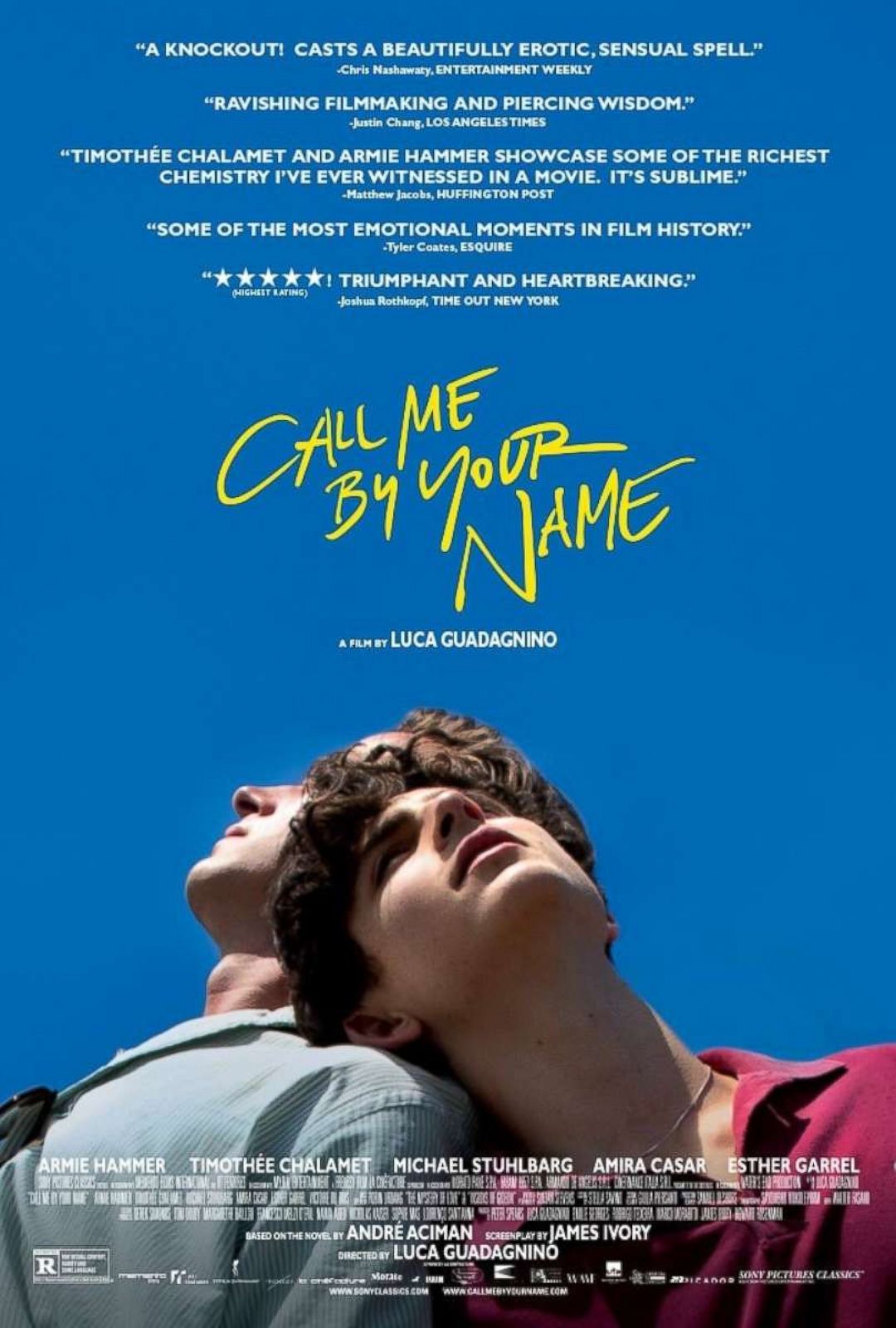Call Me By Your Name is nothing less than a parade of perfect coming-of-age allegory that evokes the mystery, frustration, and overwhelming bliss of love.
 The film – director Luca Guadagnino’s most recent – follows the coming-of-age romance between Elio, an American boy living in Italy (Timothée Calumet), and one of his archaeologist father’s graduate students, Oliver (Armie Hammer), during a summer dig in 1983. Oliver comes to live with Elio’s family for the time, and the two share a room. Though Elio is buried in his books and music, he can’t keep away from the family’s new guest. And somehow, though he is frequently preoccupied with his studies, Oliver often finds himself drawn to Elio. Over the course of the summer, the two are constantly attracted to and repelled by each other’s uncertainty.
The film – director Luca Guadagnino’s most recent – follows the coming-of-age romance between Elio, an American boy living in Italy (Timothée Calumet), and one of his archaeologist father’s graduate students, Oliver (Armie Hammer), during a summer dig in 1983. Oliver comes to live with Elio’s family for the time, and the two share a room. Though Elio is buried in his books and music, he can’t keep away from the family’s new guest. And somehow, though he is frequently preoccupied with his studies, Oliver often finds himself drawn to Elio. Over the course of the summer, the two are constantly attracted to and repelled by each other’s uncertainty.
The pair’s internal frustration is revealed largely through allegory, a technique heavily employed in renaissance still-life painting. The Dutch, in particular, were fond of proverbs and the objects associated with them, as can be seen in the still lives of Pieter Claesz and Willem Heda, amongst others. Regardless of whether or not these works served as visual inspiration for Call Me By Your Name, their particular fascination with fruit can offer possible insight into the strongly emphasized presence of peaches and apricots in the film.
Fruit is one of the most common examples of metaphorical imagery in Renaissance painting. Often used to express sensuality and fertility, the ripest fruits stood for bounty and plenty, while those that were decaying often represented the fragility of life.
Apricots and peaches are particularly abundant throughout Call Me By Your Name, largely due to the fact that Elio’s family owns an orchard. A book-lover with a passion for transcribing music, he sits under and near the trees when he does his work.
Often times someone in the house will whip up some apricot juice, frequently offering it to Oliver, as he is their guest. At first, he refuses the drink, indicative of his resistance to involving himself with Elio – an issue he sways back and forth on constantly. Despite this, Oliver is initially the more forward one, offering Elio massages and inviting him around town.
Once he believes he has made his intentions known, Oliver accepts the apricot juice while he and Elio’s parents are discussing linguistics in the parlor. He pauses a moment to drink the entire glass; the room is silent, and Elio watches intently, mesmerized.
Finishing his glass, Oliver goes off on a tangent discussing the etymology of the word “apricot” itself. Elio’s father (Michael Stuhlbarg), who tried explaining it earlier, is completely silenced, along with everyone else. It’s difficult to tell if anyone’s impressed or simply put off by this assertion of intellectual prowess. However, Elio manages a smile, as does his mother.
But when Elio seems to shrink from his advances, Oliver no longer drinks the apricot juice – in fact, nobody seems to. Historically, the apricot itself can represent self-sufficiency, but it can also stand for touch. Between Oliver and Elio, the former is the more self-sufficient; he lives and acts on his own accord, more comfortable with his sexuality than the latter (though perhaps not completely). However, he is also the first to initiate physical contact between them: during a volleyball match, he attempts to massage Elio’s shoulder and back. The boy practically runs away, leaving Oliver even more confused by his reaction.
Elio’s orchard is bountiful, boasting ripe peach trees amongst the apricots. In painting, peaches sometimes had a Christian undertone, representing the Holy Trinity: it has outer flesh, a protective “bone” around the seed (kernel), and the seed itself. Otherwise, they represented the heart or good health. Mature fruits were symbols of fertility and well-being, as well.
In today’s world, one might recognize the peach (in emoji form) as representative of something else. Still, the undertones of fertility and (most likely) good health remain. It’s fascinating how over the course of media history, we recycle symbols and mythologies – yet their meanings only change so much.
In the film, there are two important moments with peaches, one far more significant than the other. The first occurs when the camera simply holds on a peach tree for a prolonged time, emphasizing the fruit’s allegorical significance. It is an uncommonly long take, though not unexpected in this film. It further serves to highlight the positively gorgeous colors of an Italian orchard in the summer sun, a richness that only added sensuality to the film’s mood.
The second occurs when Elio takes some peaches and brings them to bed with him – literally and figuratively. Pondering one of the fruits, he digs in his thumb, removes the pit, and proceeds to make love to it. After ejaculating into the peach, he leaves it on his bedside.
This comes after his first sexual experience with Oliver, an outpouring of his confusion and frustration. But the scene can also show his acceptance of this change in his life: an embracing of the new, a healthy change for the heart.
When Oliver comes by later, he sees the peach on the table and knows exactly what Elio did with the fruit. In an attempt to eat it, the boy stops him and bursts into tears. Oliver is at first a little confused, but he consoles Elio, replacing the peach on the table and holding him. Overwhelmed with a host of new emotions, the boy is also acutely aware of the limited time they have. In a breath, he manages: “I don’t want you to go.”
The act of Oliver’s eating the peach is, again, tied to ideas of sexuality and fertility. It is a gesture of deepest love: that he should want any and everything to do with Elio, even down to the most elemental parts of him. The action completes their intimacy almost more so than their sleeping together.
Use of allegory adds an ages-old intimacy to the love shared by Oliver and Elio. For a romance so burdened by time (Oliver is only there for the summer), the overtones of classicism – the statuary Elio’s father is uncovering, the ancient history of Italy they are almost constantly in the shadow of – emphasize the timelessness of love. These more novelistic elements of the film create a complete image of their courtship that may require a more trained eye to fully understand, but can be felt by the entire audience. It’s subtle, but theirs is a love that demands subtlety.


